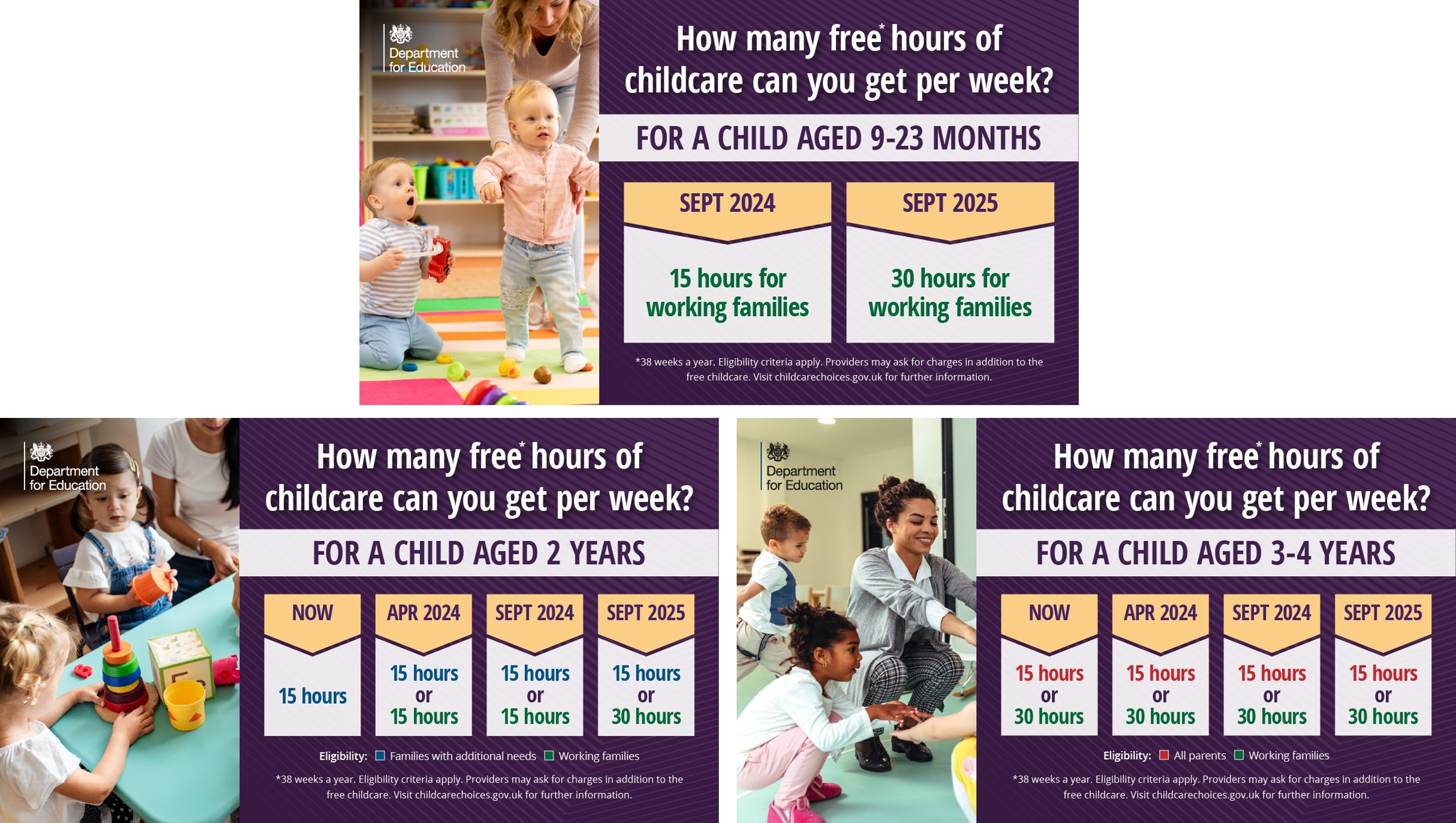After the March Budget I was messaged by an elderly male constituent to complain there was too much on childcare, it was no help to him and would be very expensive. How could we afford it?
Equally some constituents have spoken to me about the cost of childcare, in particular mums wanting to return to the workplace. It’s a real challenge for them to find suitable, affordable care and so many avoid the struggle, leave work and stay at home to be with their child/children full time.
This e news aims to explain what's being done and why - and to square the circle and see whether the question is really ‘can we afford not to fund more childcare?’.
What happens at the moment?
The government offers support for parents with childcare costs, including access to the Department for Education’s free hours entitlements, and financial support with childcare through Tax-Free Childcare (TFC) and Universal Credit (UC) childcare offers. But despite the government investment in childcare to date, it’s clear to many the current system is in need of change and MP’s have been pushing for changes to childcare support like my neighbouring MP for Stroud, Siobhan Baillie, a new parent herself, has been leading the push for a change.

After the opening of the Secret Garden in Eastgate St, 2017
What’s the current childcare offer for parents and what’s changing?
Let’s go back first to when the Government introduced free childcare for parents back in September 2010 just after the Coalition Government began. It gave all 3-4 year olds 15 hours (38 weeks per year) of free childcare. This was extended in 2013 to include disadvantaged 2 year olds- including where families qualify for specified benefits, and the child has an Education, Health and Care Plan or is ‘Looked After’.
The plan was designed to help mothers with childcare costs so they could carry on working – and it worked because the numbers of women in work rose from 67% to 72.3%.
The scheme was extended again in September 2017 with an increase of 15 hours to 30 hours of free childcare for all 3-4 year olds with an approved provider.
What’s changing and why?
Post-pandemic there are 1.3m people of working age not working full time of whom some will be new parents. So under the Chancellor’s new scheme, this offer of 30 hours will be extended to parents in England with children aged 9 months to school age (so all under 5’s). The 30 hours will start immediately after maternity or paternity leave ends and is worth on average of £6,500 every year for a family with a two-year-old child using 35 hours of childcare every week, reducing childcare costs by nearly 60 per cent.
Are there any restrictions?
Yes: there is a maximum income threshold for parents of £100,000 pa to both Tax-Free Childcare and 30 hours free childcare. More important to Gloucester, for families with two parents, both must be working.
For parents of older children of school age who require ‘wrap around’ care, the Government now also offers tax-free childcare. Parents can claim an additional 20% contribution towards childcare costs outside the free entitlements and means tax-free childcare can be worth up to £2,000 per year for children from 0 - 11-years-old, or up to £4,000 per year for disabled children aged 0-16-years-old.
What about families on Universal Credit?
Lower income families on UC can also claim back up to 85% of their childcare costs, much more generous than the previous benefits system, and it can be used alongside the free early education entitlements. Parents on UC who face the highest childcare costs, often because they are working longer hours, will benefit from an uplift to thresholds for childcare costs to a maximum amount of £951 for 1 child and £1,630 for 2 children.
When will this new package be available?
It starts next year: working parents of two-year-olds will be able to access the 15 hours of free childcare next year, from April 2024. From September 2024 the offer will be extended to all children aged nine months upwards.
Overall, nearly one million parents in England will be eligible for the 30 hour offer and every single working parent of a child under 5 will benefit from 30 hours free childcare.

What support is there for childcare providers?
The funding announced will mean government will pay childcare providers more for the free provision they provide – a move that may also save parents money as private childcare providers often require parents to "top up" the hourly rate the government pays them for childcare, to make up what they actually charge.
Childcare providers will benefit from an extra £204m to increase the hourly funding rate to deliver existing free childcare in England in 2023-24, with an increase to £288 million in 2024-25 to help the roll out of the additional childcare. It will be allocated by the Department for Education through Gloucestershire County Council.
Any changes for childminders?
Yes: the Government is also opening up the childminder market.
While early years settings, like nurseries, are the most popular option for families, childminders are generally the most affordable and flexible form of childcare. The Government will support more people to become childminders by reducing the upfront costs, allowing childminders to spend more of their time working from a greater range of locations. For example a local community centre or village hall would be used rather than their own home, giving them greater flexibility of the ratios when looking after their own children or siblings of other children. Ofsted will reduce the inspection of childminders and slim down the childminder specific early years foundation stage, reducing the framework by one-third to ensure content is targeted and simpler to navigate.
What does ‘ratio flexibility’ mean?
Childcare for children aged 0 to 2 is the most expensive for providers to deliver, because of the need for higher supervision levels. From September 2023 childminder staff-to-child ratios will change from 1:4 (one adult to four children) to 1:5 (one adult to five children) for 2-year-olds in England (to align with what already happens in Scotland). This will increase flexibility for providers and the availability of childcare provision for parents.
Anything on training?
There’s up to £180m for workforce training, qualifications and support and guidance for the early years sector to help disadvantaged children and also childminder agencies, which the government describes as “one-stop-shops" for childminders, providing settings with training, admin support and marketing services.
Additionally, the launch of a new wraparound childcare pathfinder scheme will help all parents to be able to access childcare provision in their local area from 8am-6pm. We await details of this.
Where can I find out more and see approved childcare providers?
Gloucestershire County Council oversee the childcare market in Gloucester, and elsewhere in the county. The Family Information Service on local providers: Glosfamilies Directory
More information about financial help with the costs of childcare is on the Gov.uk website: www.gov.uk/help-with-childcare-costs
Lastly, the Childcare Choices website helps parents understand what they are eligible for: https://www.childcarechoices.gov.uk/
What’s the total cost to taxpayers on this?
It will cost the government an extra £4bn to increase the free hours for parents to change childcare provider, payments and training and uplift Universal Credit. But the costs are spread over 2023-2025, not all at once. The Treasury estimates that 60,000 more parents will be able to work as a result with a reduction welfare benefits.
Can we afford this?
If we are going to reduce the 1.7m people of working age not working full time of which c.500,000 are women then we have to make it easier for them to do so. And since tax from businesses tax from businesses and workers pay for pensions, my elderly male constituent, even if without children and grandchildren, will want to see his pension paid.
How will this affect you? Let me know on [email protected].
Best regards
